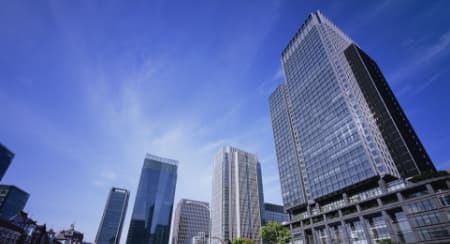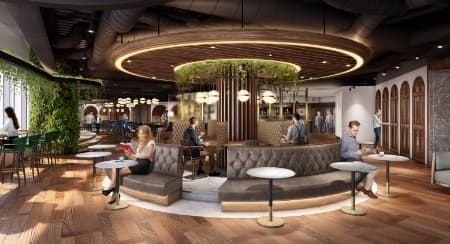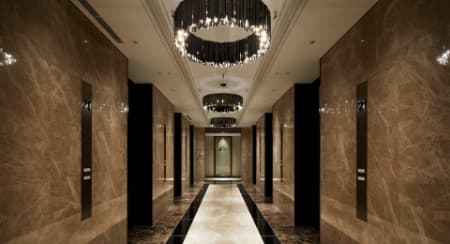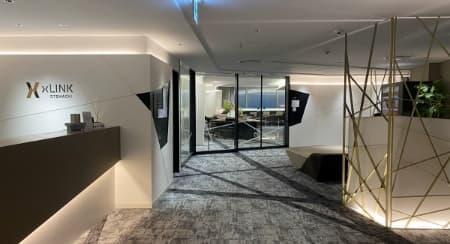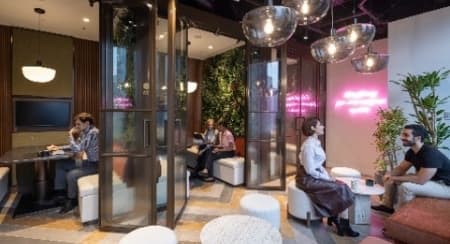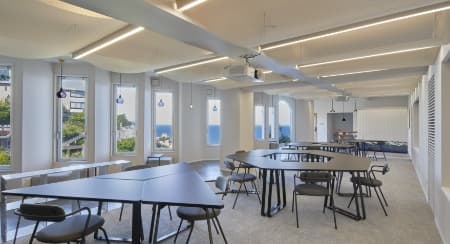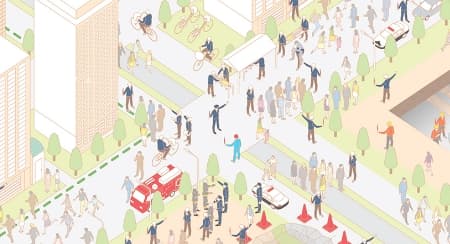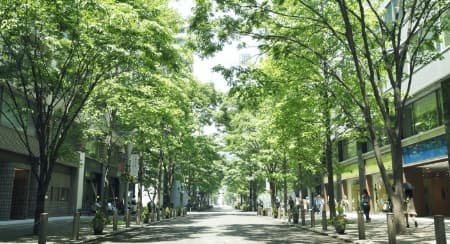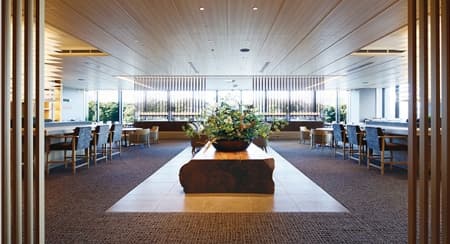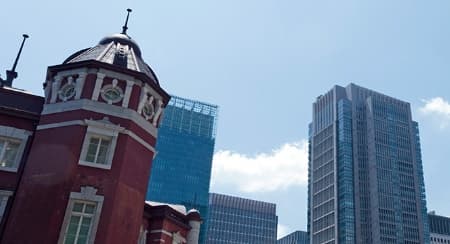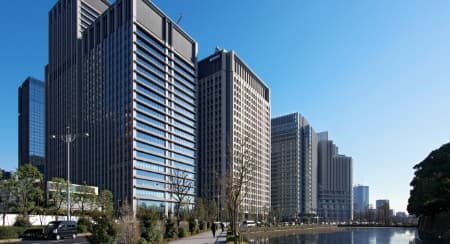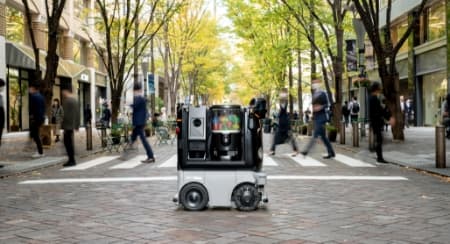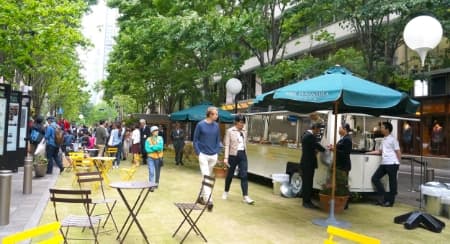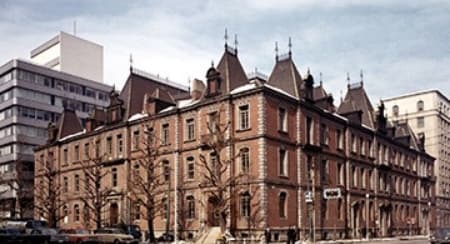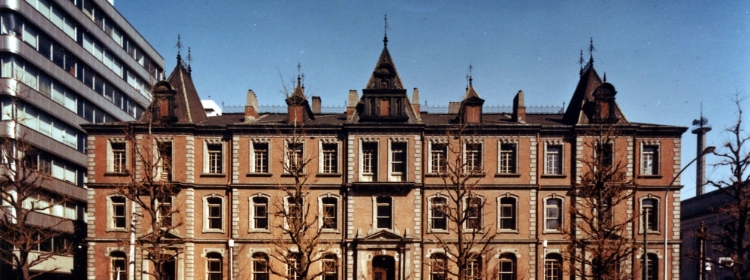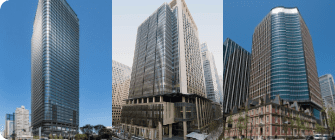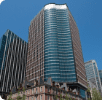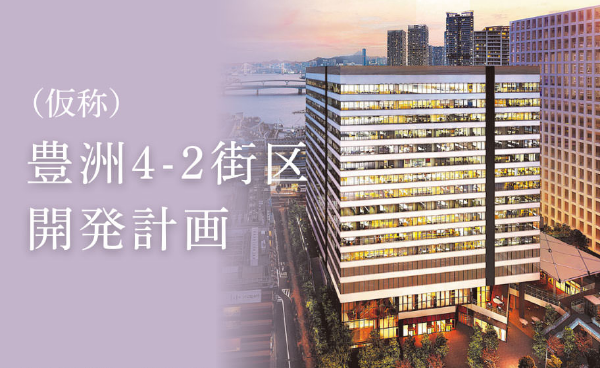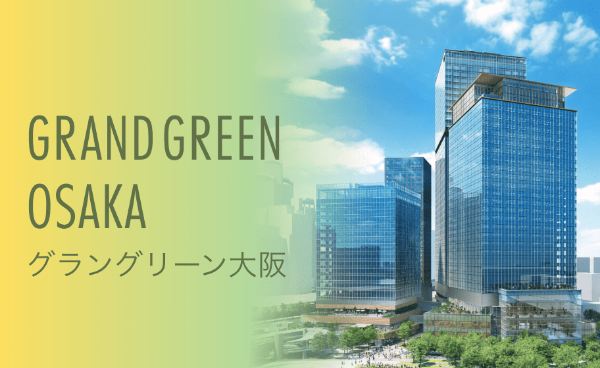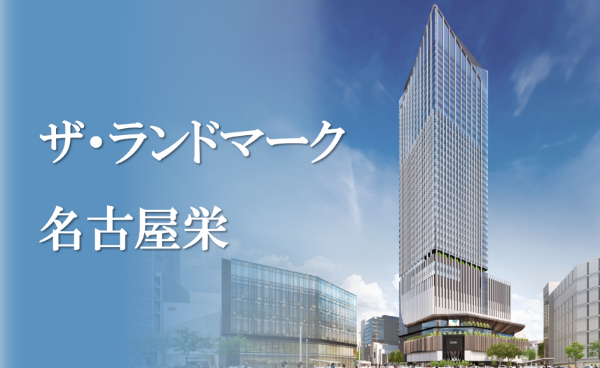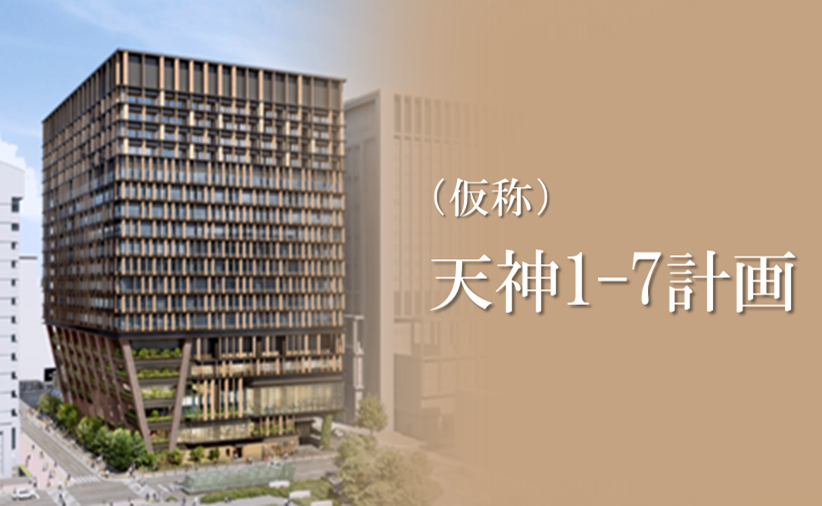From the past and to the future
1603
The business district of Marunouchi used to be lined with residences of feudal lords from various countries who protected Edo Castle and supported the prosperity of the shogunate.
1890
Acquisition of Marunouchi and the dream of becoming a major business district
acquire Marunouchi area by the request of the Meiji government.
At that time, the Marunouchi area, which was a wilderness with grown thick grass, was called "Mitsubishigahara."
However, in the background of the acquisition, there was the conviction of Yanosuke that
"In order for Japan to follow the path of a modern nation, we needed to create a business center like New York or London".
1890s - 1950s
Dawn of a full-fledged business center
was completed in 1894. After that, a three-story office building made of red bricks
built one after another. The cityscape, reminiscent of London,
was called "Iccho London".
Designed by Josiah Conder as a brick building with a western appearance. This is the first office building of Marunouchi.

The construction of an elevated railway connecting Shimbashi and Ueno was planned, and it was born in the wilderness in front of the Imperial Palace as a central station for the new line. It was named "Tokyo Station".

The Marunouchi Building pioneered the introduction of commercial facilities in office buildings. It was born as the largest building in Japan before the war in the Showa era.

Starting with the Mitsubishi Ichigokan, Western-style office buildings were built one after another with unified red brick construction. That cityscape was called 'Iccho London'. After the completion of the Marunouchi Building, the area Gyoko-dori Ave. lined with American-style buildings, was called “Iccho New York” and became a pioneer of business centers.

It was established in front of the South Exit of Marunouchi Station as a new office building for the Yokkaichi Post Office, which was established together with the Osaka Post Office and Saikyo Post Office (Kyoto) when the modern postal system was launched. (Completed in 1931)

1960s - 1980s
Mass supply and increase in volume of office buildings due to rapid economic growth
By the "Marunouchi Comprehensive Remodeling Plan", drawn in 1959, rebuilding to larger floors office buildings has began.
To accomodate the flood of cars in the business district, Marunouchi parking lots, which can accommodate 520 cars, was built in second basement floor by digging up Gyoko-dori Ave.

The width of Marunouchi Naka-dori Ave. was widened from 13m to 21m due to the increase in traffic of people and vehicles.

1990s - 2010s
Making Marunouchi "the most interactive city in the world"
under the concept of "the city with the most active interaction in the world."
Starting with the completion of the Marunouchi Building in 2002, we have rebuilt many buildings.
After that, we expanded the liveliness and bustle of Marunouchi to Otemachi and Yurakucho,
along with deepening business functions, and the diversity of city functions.
After about 80 years, the old Marunouchi Building was rebuilt as the first phase of a redevelopment project in Marunouchi, which has become one of Japan's leading business centers.

This is the large redevelopment project on the site of the former Japanese National Railways head office building. It was born as a new landmark in Marunouchi, including multiple office buildings, commercial complexes, and hotels.

In 2009, the Mitsubishi Ichigokan was restored in line with the development of the Marunouchi Park Building, which is part of the Marunouchi reconstruction project. In 2010, it opened as the "Mitsubishi Ichigokan Museum" with a cafe.

The Marunouchi station building, which opened in 1914 and is a nationally designated important cultural property, has been restored to its original appearance.

This is the large redevelopment project on the site of the former Japanese National Railways head office building. It was born as a new landmark in Marunouchi, including multiple office buildings, commercial complexes, and hotels.

In front of the Otemon Gate of the Imperial Palace, a commercial and office building with a 2,800㎡ lush green "Hotoria Plaza" was born. A serviced apartment opened on the upper floors, proposing a new lifestyle that has proximity between the home and workplace

It is close to the Imperial Palace Outer Gardens with its sprawling water and green scenery, and Ginza, Hibiya, and Yurakucho. With the Tokyo Chamber of Commerce and Industry and the Tokyo Kaikan on the lower floors, this large floors office building has a high level of "formality", as well as a "brilliance" with a scent of commerce and culture.

2020s
Aiming for further “expansion” and “deepening” of Marunouchi reconstruction
by positioning our town development after the 2020s as the “Marunouchi NEXT stage”,
In addition, we regard Yurakucho and Tokiwabashi area as the prioritized area, and will promote redevelopment and renovation.
TOKYO TORCH is the large mixed-use redevelopment project with 3.1ha site area, which is the largest in the vicinity of Tokyo Station. "Tokiwabashi Tower" completed as the first project of TOKYO TORCH.

In FY 2027, "Torch Tower", a 390m skyscraper tower that will become a new landmark in Tokyo, is scheduled to complete with the aim of creating a global hub that creates a variety of activities and exchanges. At the same time, we plan to develop a large plaza of approximately 7,000m2 that will become the new face of Tokyo Station.

